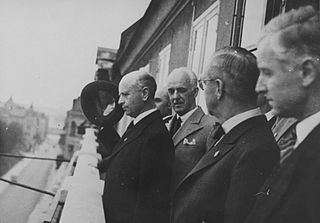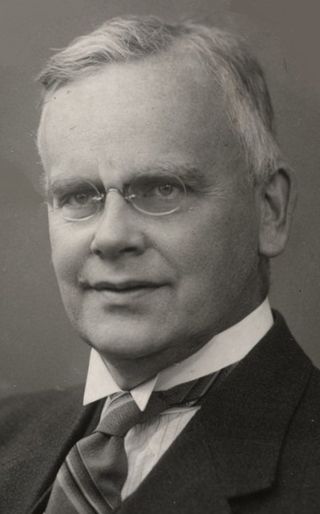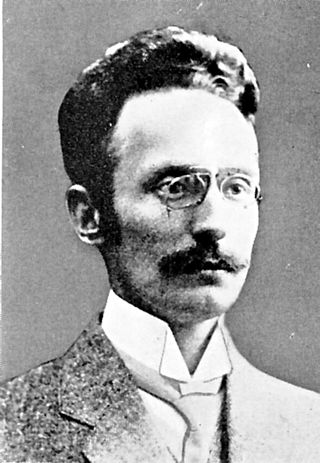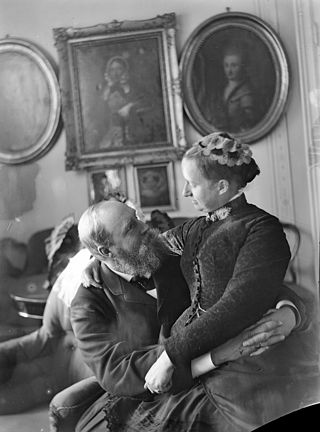Related Research Articles
Events in the year 1920 in Norway.
Events in the year 1892 in Norway.
Events in the year 1881 in Norway.
Events in the year 1824 in Norway.
Events in the year 1880 in Norway.
Events in the year 1870 in Norway.

The Norwegian Legation in Stockholm played a significant role during the Second World War. Until 9 April 1940 the legation consisted of four persons, and at the end of the war about 1,100 persons were connected to the legation. Refugee cases were among the legation's most central tasks. In 1941 a military office was established, and this was later split into separate offices for intelligence, and for Milorg related cases.

Harald Gram was a Norwegian jurist, politician and genealogist. He was secretary general for the Conservative Party of Norway for 22 years, deputy mayor of Aker, member of Parliament from 1928 to 1936, and stipendiary magistrate in Oslo from 1936 to 1957. He was also noted for his work during World War II.

Gregers Winther Wulfsberg Gram was a Norwegian jurist and politician, and international arbitrator. He was a Supreme Court Assessor, Norwegian prime minister in Stockholm from 1889 to 1891 and from 1893 to 1898 and County Governor from 1898 to 1915.
Jens Jensen Gram was a Norwegian jurist and politician.
Johan Fredrik Gram was a Norwegian chemist.
Harald Mathias "Mads" Gram was a Norwegian physician.

Eivind Heiberg was a Norwegian engineer and railway director. He is known as the chairman of Skabo Jernbanevognfabrik from 1899 to 1924, the Federation of Norwegian Manufacturing Industries from 1906 to 1912, the Norwegian Employers' Confederation from 1912 to 1917, the Norwegian State Railways from 1924 to 1938 and Standards Norway from 1924 to 1934.

Jens Gram was a Norwegian industrialist.
Jens Eugen Tangen was a Norwegian trade unionist.
Events in the year 1779 in Norway.
Irma Ingertha Gram was a Norwegian art historian.

Hans Thomas "Hassa" Horn was a Norwegian road engineer, industrialist, sports official and politician for the Conservative Party.
Ragnar Halvorsen was a Norwegian businessman and organizational leader.
References
- 1 2 Henriksen, Petter, ed. (2007). "Norges Industriforbund". Store norske leksikon (in Norwegian). Oslo: Kunnskapsforlaget. Retrieved 7 November 2009.
- ↑ Hammer, S. C. (1929). "Gram, Jens". In Bull, Edvard; Jansen, Einar (eds.). Norsk biografisk leksikon (in Norwegian). Vol. 4 (1st ed.). Oslo: Aschehoug. p. 543.